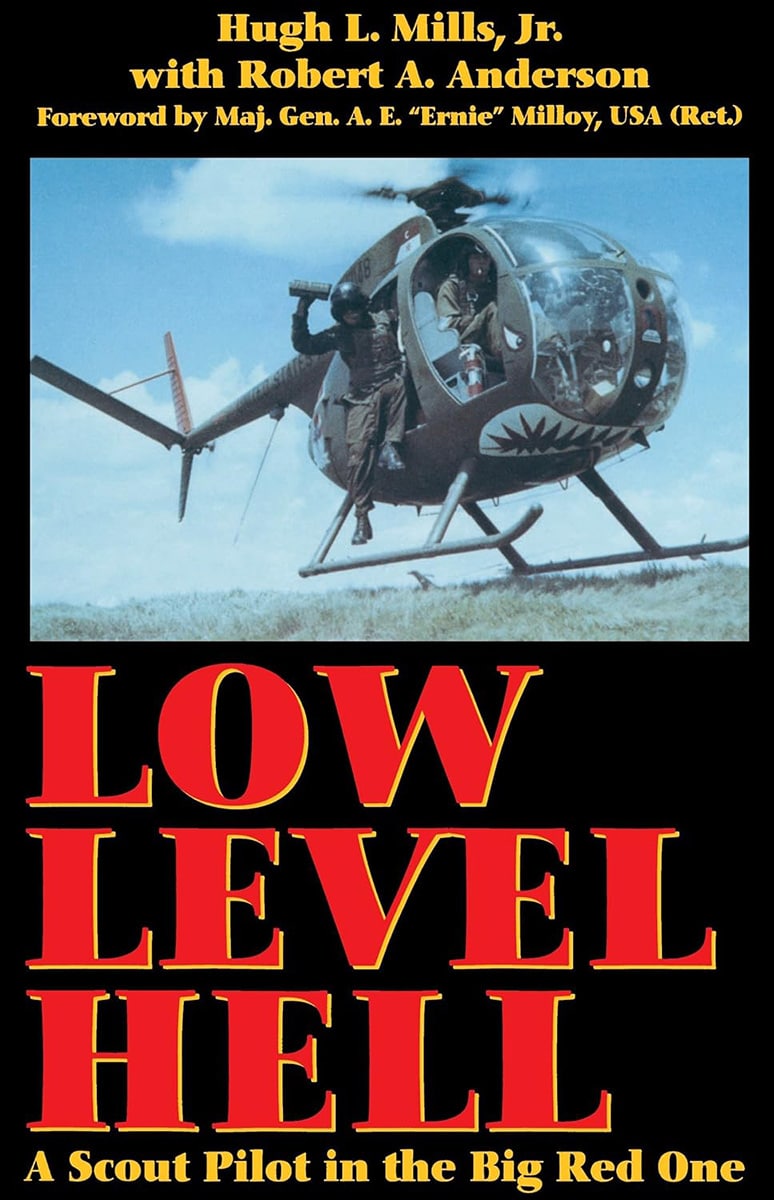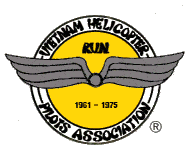Low-Level Hell: Vietnam War’s Most Legendary Army Aviator?
December 14th, 2023
7 minute read
Anyone who ever flew an Army helicopter reveres the Loach. Uncle Sam called the bizarre little egg-shaped aircraft the OH-6A Cayuse. Its official classification was Light Observation Helicopter, hence the informal appellation “Loach.” The Loach looks and sounds like a giant, angry bumble bee. It is a simply magnificent machine.
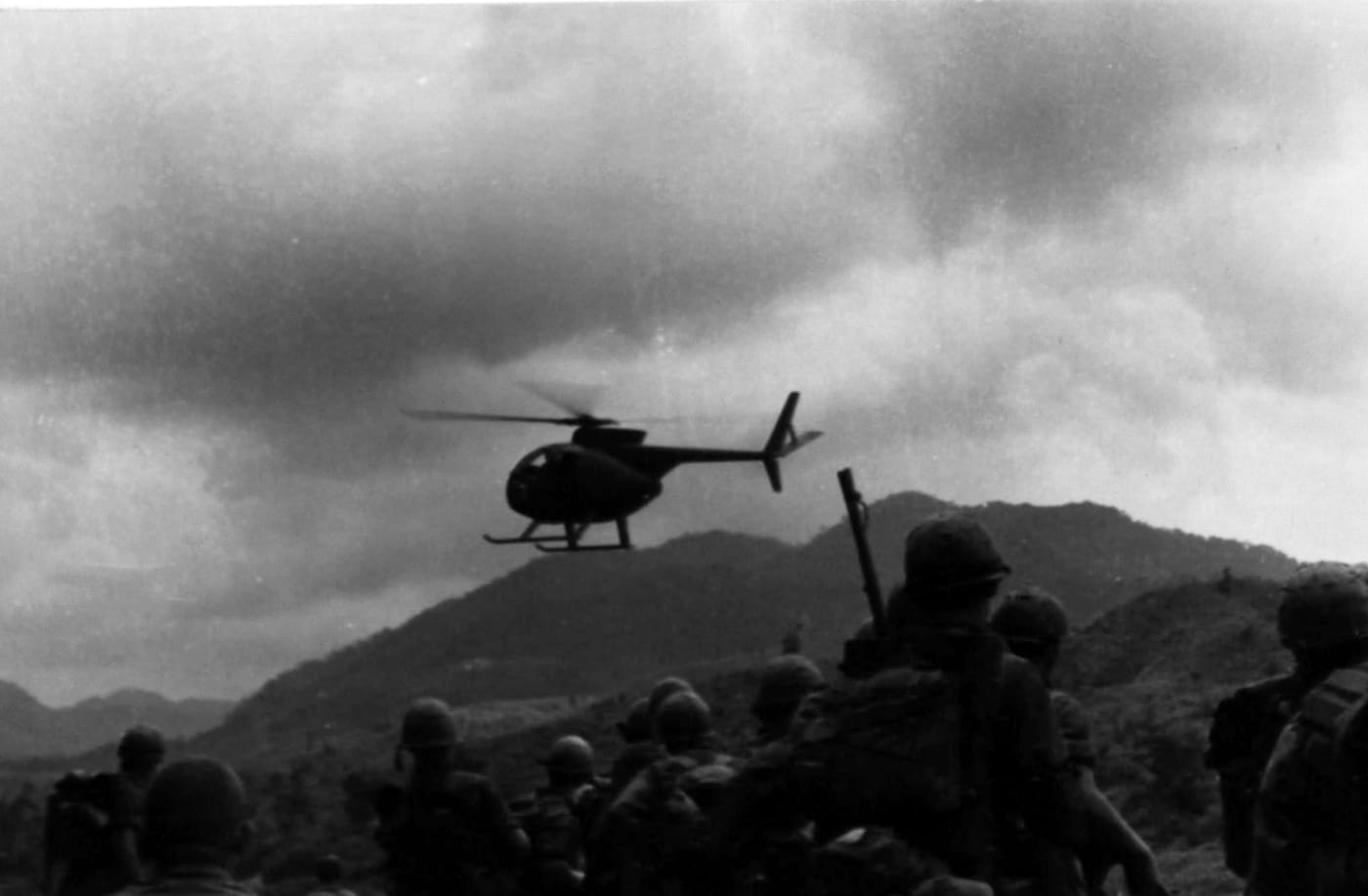
The Loach was used for scouting missions during the Vietnam War. The aircraft was flown without doors at extremely low levels. The typical crew layout was a single pilot on the right with a crew chief sitting just behind on the same side, packing an M60 belt-fed machinegun suspended from a bungee cord. Offsetting the weight on the left was an M-134 minigun in an XM21E1 mount. This electrically-powered 7.62x51mm belt-fed Gatling gun cycled at either 2,000 or 4,000 rounds per minute via a two-stage trigger. It fed from a 2,000-round ammunition magazine. The pilot sighted the minigun via a grease pencil mark on the inside of the Plexiglas canopy.
The Loach operated most commonly as part of a Pink Team. In this configuration, the Loach cruised about down low in the dirt, looking for bad guys, while one or two AH-1G Cobra gunships orbited at altitude, waiting to dive in at the first sign of trouble. The two elements maintained constant radio contact. Experienced Pink Teams were devastating killers on the battlefield. Survival and tactical effectiveness demanded both nerves of steel and exceptional pilotage.
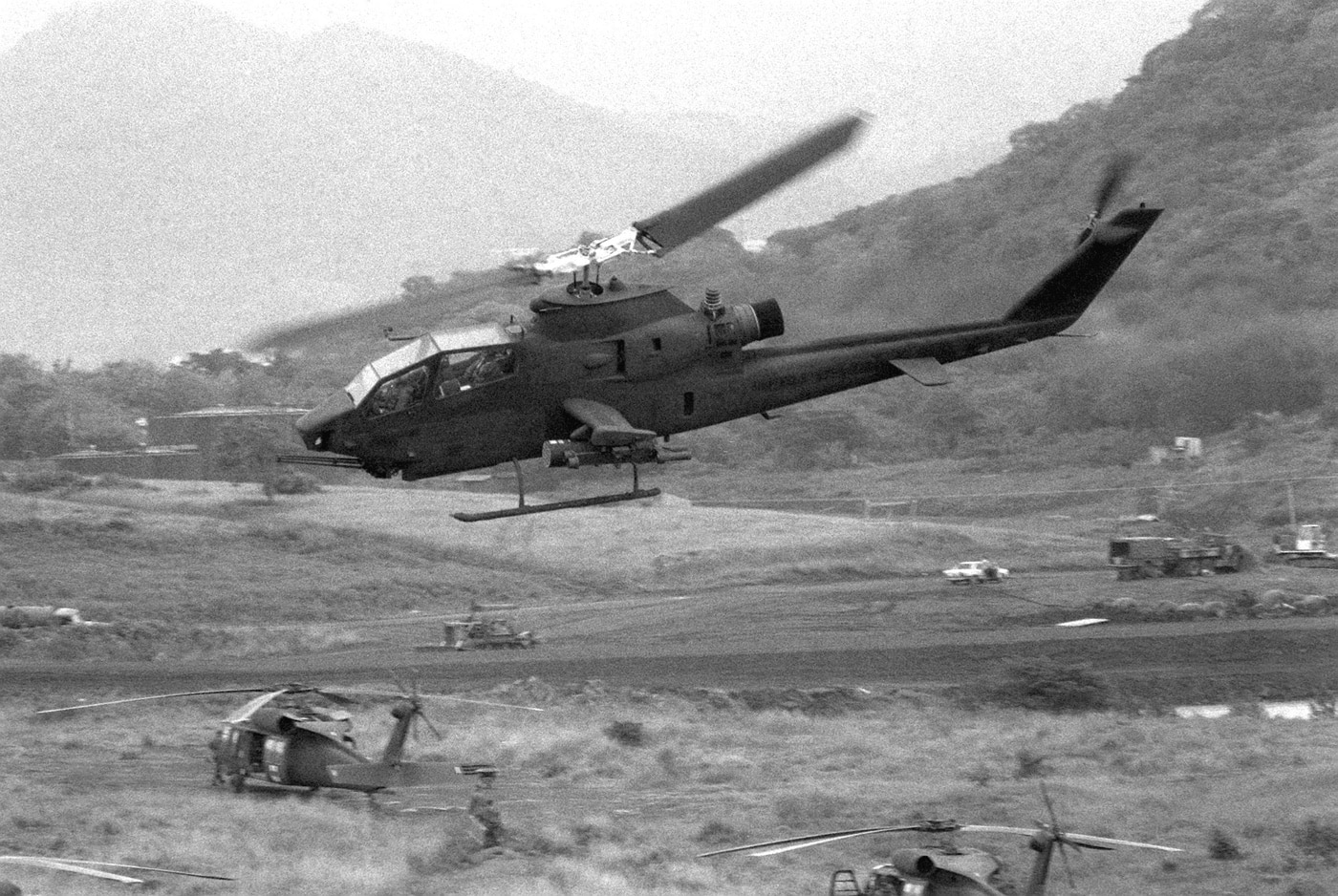
Of all the scout pilots who served in Vietnam, one name percolates above all the rest: Lt. Col. Hugh Mills. He is a legend among Army aviators, even today. A Loach painted as his distinctive “Miss Clawd IV”, dangles proudly from the ceiling at the Army Aviation Museum at Fort Rucker. Among rotary-wing aviators, that is the Army’s highest accolade. Lt. Col. Mills earned every bit of that love.
A Hard Day in Hell
In the summer of 1969, then-Lieutenant High Mills piloted his agile little Loach as the bottom half of a hunter-killer Pink Team. In the back was his regular crew chief, Jim Parker. Mills and Parker had flown together for months and were forged into an exceptionally effective scout team. On this fateful day, they were clearing the route for a supply convoy along a length of highway called Thunder Road.
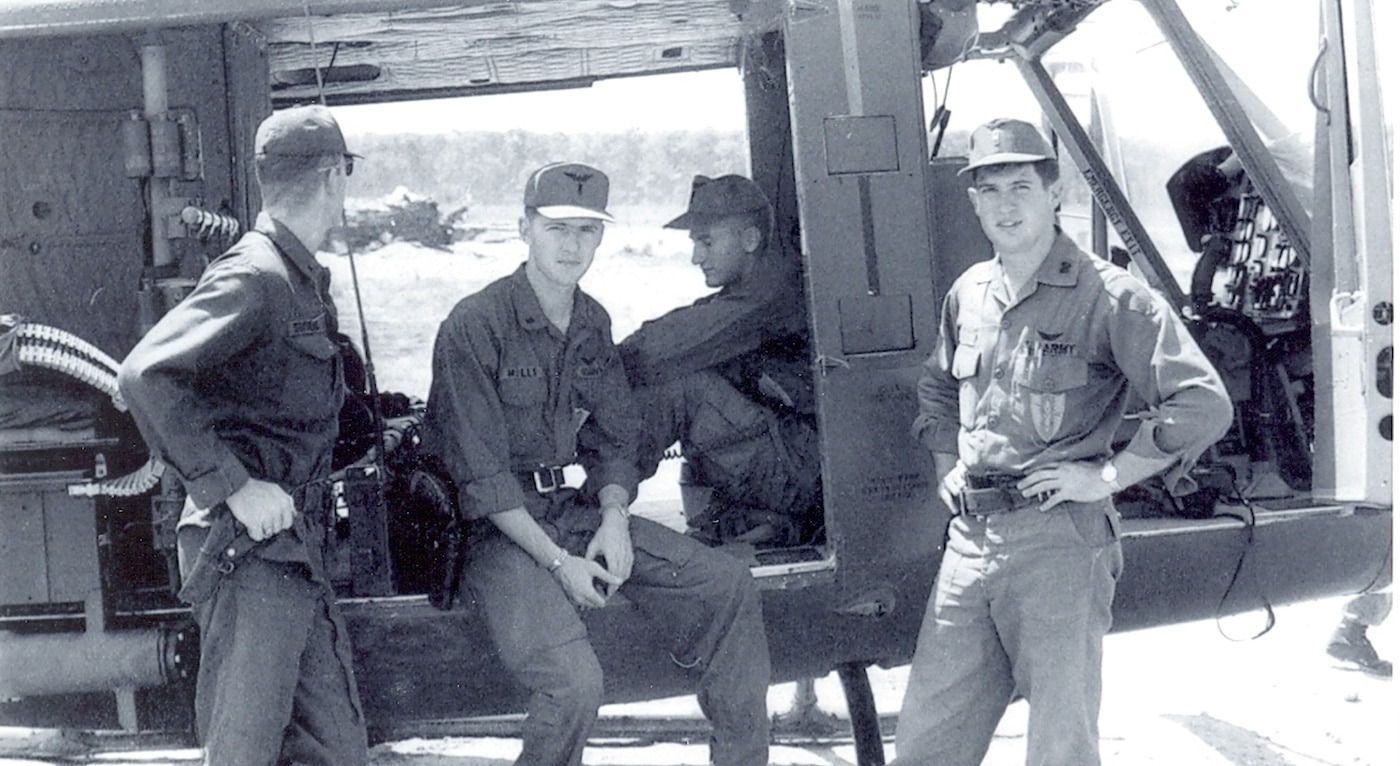
Without warning, Mills’ Loach was engaged by a well-sited VC .50-caliber machine gun. One of the big thumb-sized rounds punched through the leading edge of one of the Loach’s four rotor blades about four feet from the tip. There resulted a skull-crushing vibration as the hearty Loach clawed to stay in the air.
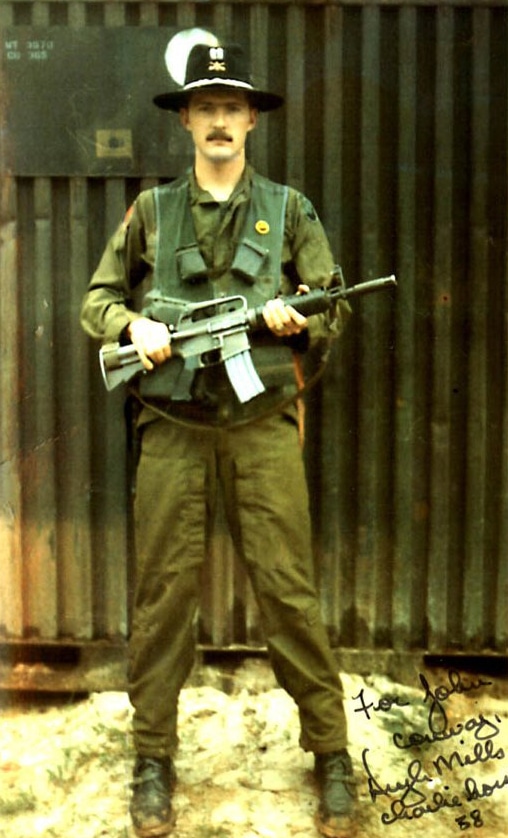
Mills retained control of the stricken aircraft, but only just. He guided the doomed helicopter to a controlled crash on a nearby flat piece of rice paddy. Parker split his chin on the front sight of his M60, but both aviators were otherwise unhurt. They cleared the aircraft with Parker’s M60 and a seven-foot belt of ammo along with Mills’ CAR-15 and a bandoleer of magazines.
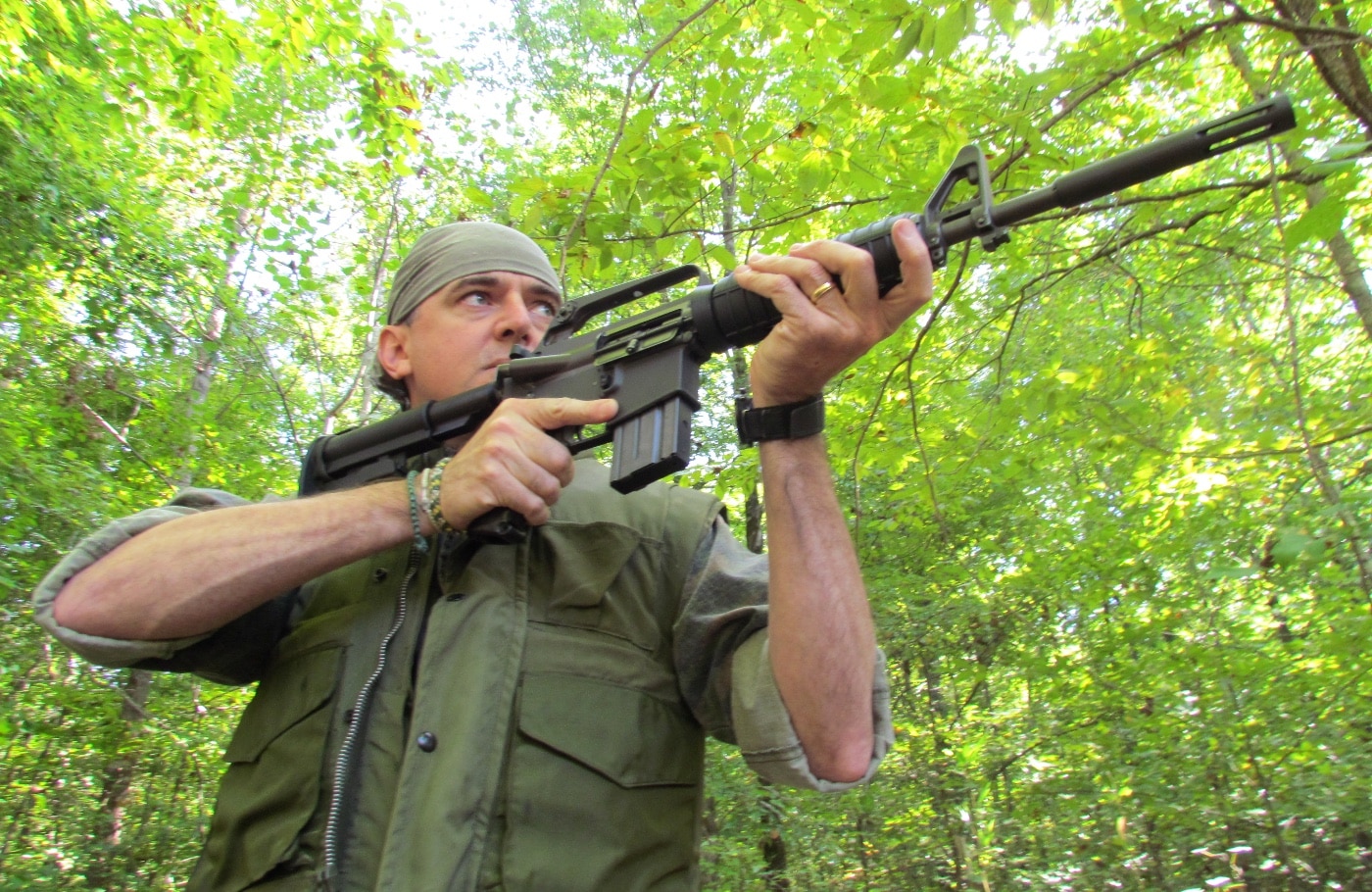
Mills spotted a pair of VC soldiers shooting at them with AK-47s from about 175 yards away. He fired a burst from his CAR-15 as Parker sprayed the area with his M60. Both enemy soldiers fell, but they just kicked over the anthill.
A substantial VC force began slathering the crash site with fire and moving toward the two trapped aviators. Parker returned to the crashed aircraft to retrieve more M60 ammo as Mills covered him with his CAR-15. Meanwhile, the high-cover Snake pummeled the tree line with 2.75″ rockets and minigun fire. However, the Cobra soon ran out of ammo.
Just when it seemed like all was lost, a nearby Infantry Brigade commander in a command-and-control aircraft dropped down to make an emergency extraction. Parker and Mills clambered aboard the hovering Huey and made their escape before the remaining VC could stop them.
Turning an NVA Pot into a Colander
During that same summer, Mills and Parker were tearing along in their Loach on a routine trip into Dau Tieng for a briefing. They had a G-model Cobra flying top cover. As they pitched over a ridgeline, Mills surprised an NVA heavy weapons platoon on the march. Without hesitation, he opened up with his minigun at close range as Parker unlimbered his M60. The NVA troops answered with a fusillade of AK-47 fire.
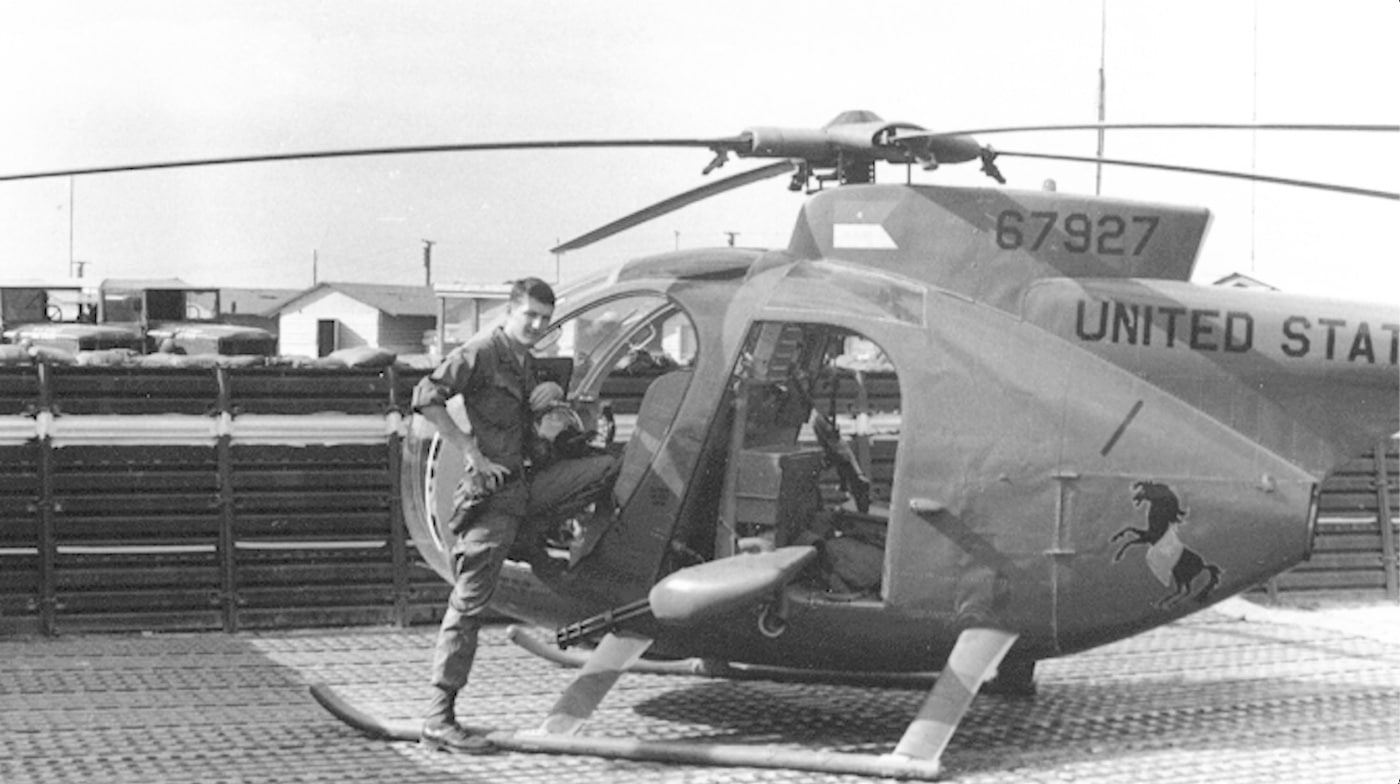
A pair of NVA soldiers tore off down a paddy dike toward the wood line and cover. The nearer of the two enemy soldiers carried a big cooking pot that flapped against his back as he ran. Mills quickly pivoted his nimble little aircraft, lined up the grease pencil mark on his canopy and triggered a quick squirt from his minigun. His burst passed through the nearest NVA soldier and into his buddy, killing them both.
Mills chased the remaining NVA troops around the paddy until both he and Parker ran out of ammo. Parker then unlimbered both his M16 as well as a 12-gauge pump shotgun. Meanwhile, Mills steadied the collective lever with his knee and emptied six rounds left-handed from his personal .357 Magnum revolver at the fleeing enemy troops. Once completely out of ammunition, Mills rolled clear so the orbiting Snake could pulverize the area with 2.75″ rockets packing flechette warheads.
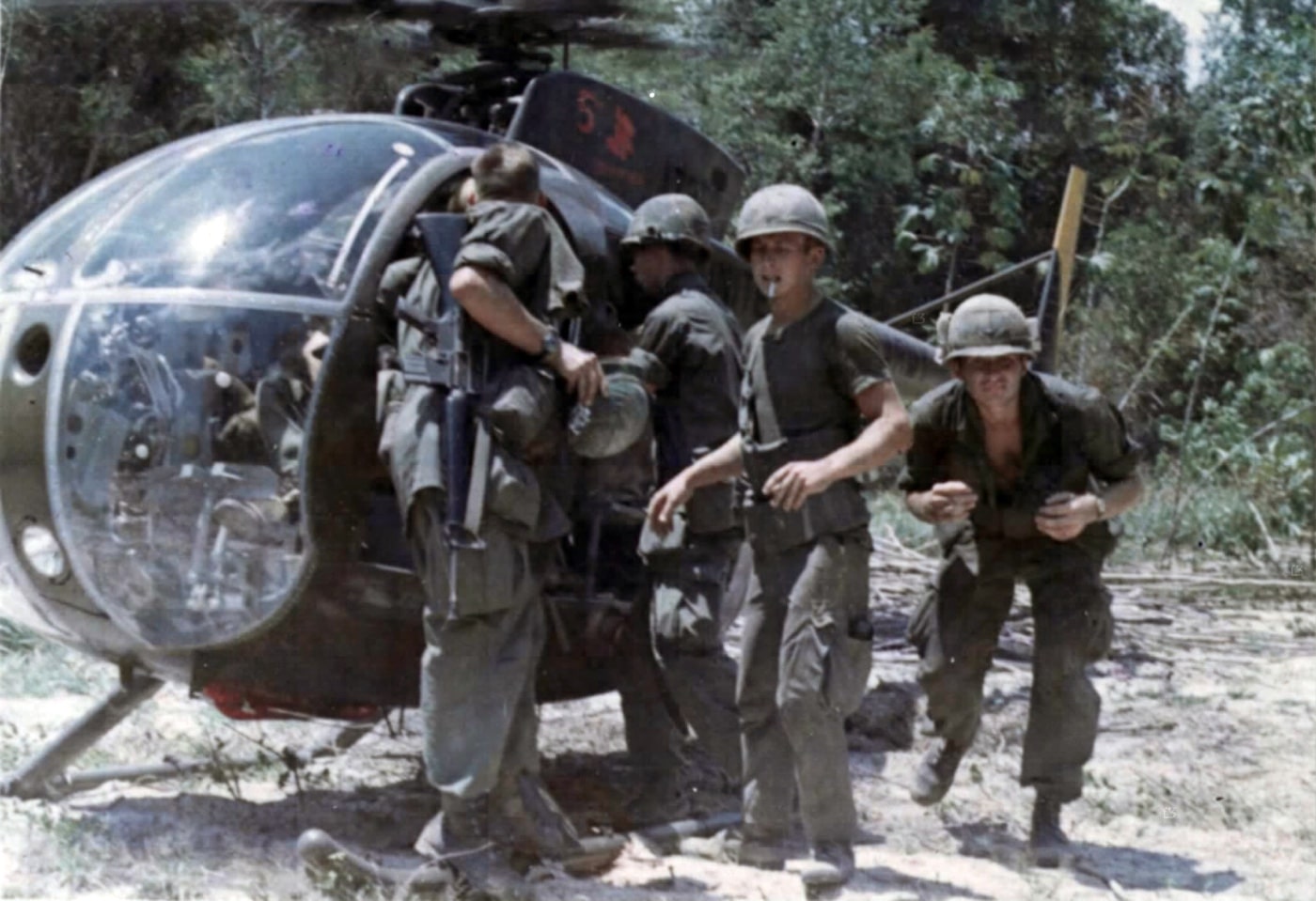
In two minutes of unfettered combat, their Loach had been hit 25 times. The airspeed indicator and altimeter were both blown away, and the armor plate underneath Parker’s seat had caught two rounds. Mills’ seat armor stopped several more. Five rounds shattered the Plexiglas canopy, two hit the tail boom, and another three struck the rotor blades. One AK round transited the engine compartment but missed anything significant. Another shot the op rod off of Parker’s M60.
Supporting ARP (Aero Rifle Platoon) grunts subsequently inserted and swept the area. They cataloged 26 KIA and seized a pair of POWs along with a large number of AK-47 rifles, an SGM heavy machinegun, a 60mm mortar and a pair of Russian pistols. When they returned to base, the infantry troops presented Lt. Col. Mills with a cooking pot sporting 24 bullet holes.
The Rest of the Story
While serving three combat tours in Vietnam, Lt. Col. Hugh Mills earned three Silver Stars, three Bronze Stars, four Distinguished Flying Crosses, and the Legion of Merit. He was shot down an amazing 16 times and was wounded three times in combat. He ultimately flew 3,300 combat hours in OH-6A and AH-1G helicopters. His record as a combat aviator will never be bested.
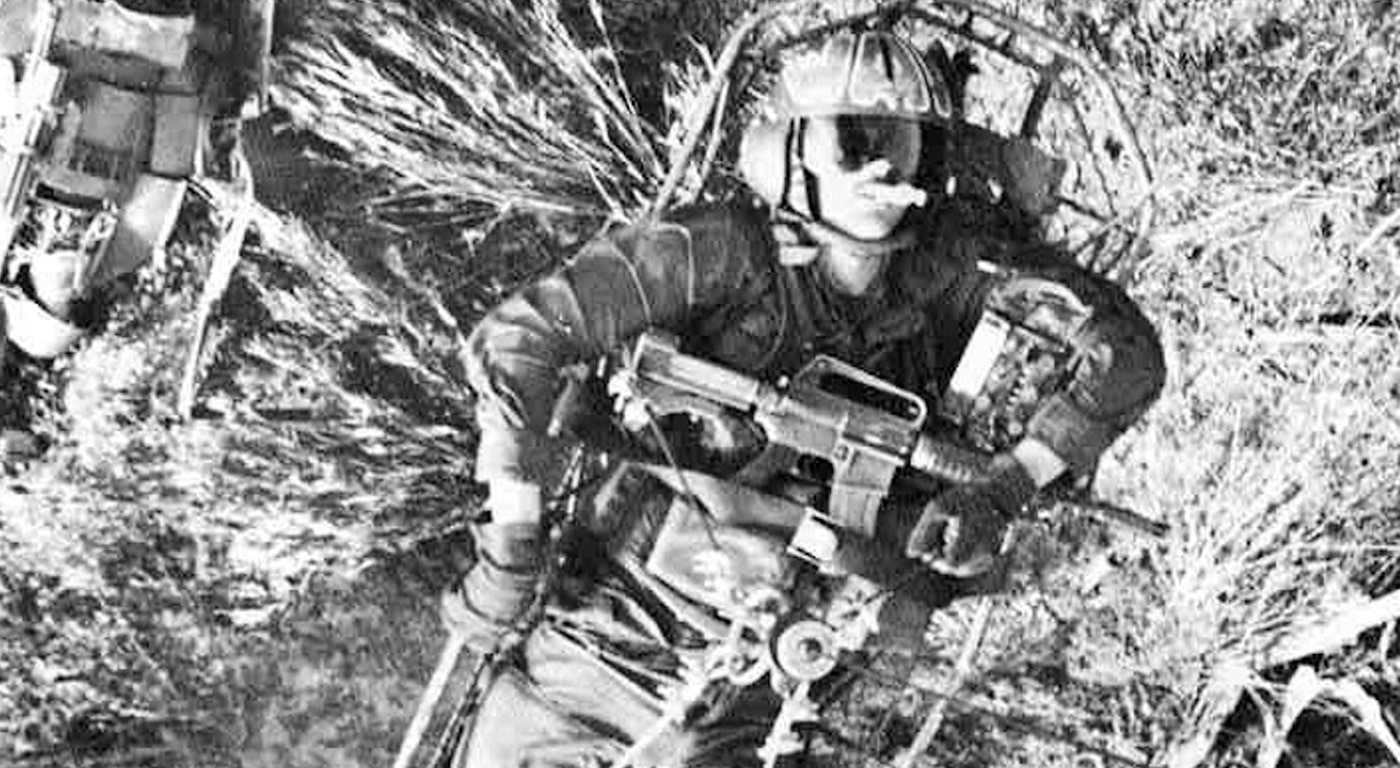
The OH-6A was tragically replaced by the Bell OH-58 in Army service. Both aircraft shared a common engine, but in my opinion the Loach was a massively better aircraft. I flew OH-58’s myself, and we all mourned the passing of the Loach. However, that was not the last Uncle Sam saw of this extraordinary little machine.
The Task Force 160 SOAR (Special Operations Aviation Regiment), better known as the Night Stalkers, adopted the OH-6 in an upgraded form as the MH-6 Little Bird. They call it the “Killer Egg.” These immensely capable machines feature an upgraded powertrain along with a more efficient five-bladed rotor system. The Night Stalkers use both an armed gunship version of the aircraft as well as slick-sided variant designed for covert insertion of special operators in places where stealth and speed are of the essence. If ever I win the lottery, my first call will be to my wife. My second will be to Boeing to pick up an MH-6 of my own.
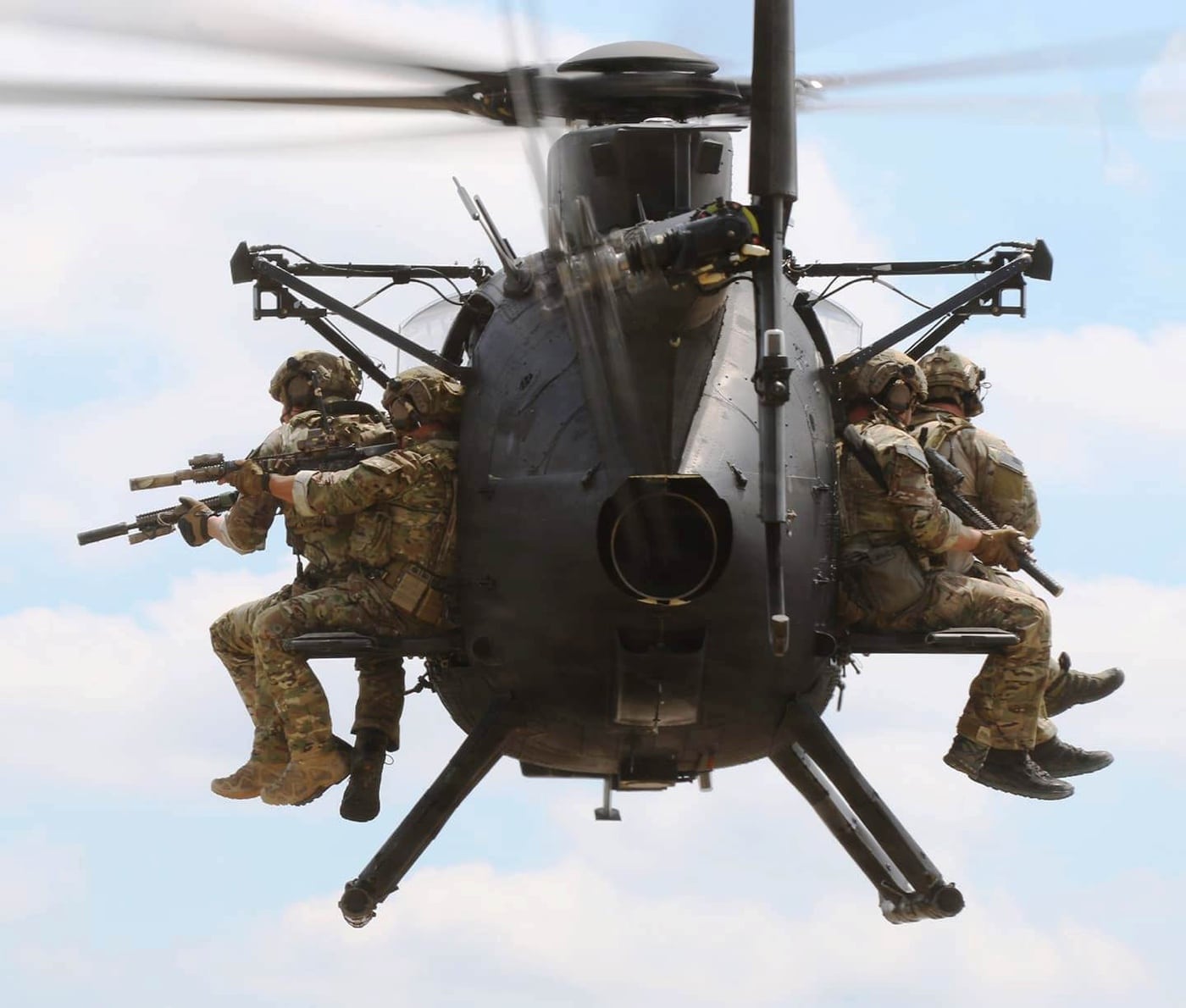
Lt. Col. Mills penned a book about his exploits in Vietnam titled Low Level Hell. It is an amazing read that is just packed with action along with plenty of cool commentary about small arms. It is available on Amazon.
Editor’s Note: Please be sure to check out The Armory Life Forum, where you can comment about our daily articles, as well as just talk guns and gear. Click the “Go To Forum Thread” link below to jump in and discuss this article and much more!
Join the Discussion
Featured in this article
Continue Reading
Did you enjoy this article?

 934
934




